Harper College will be closed on Wednesday, February 12 in observance of Lincoln's Day.
Below is an example of the photo gallery available in the standard web template. The gallery is made through a table transformation, and there are columns for desktop and mobile-optimized images.
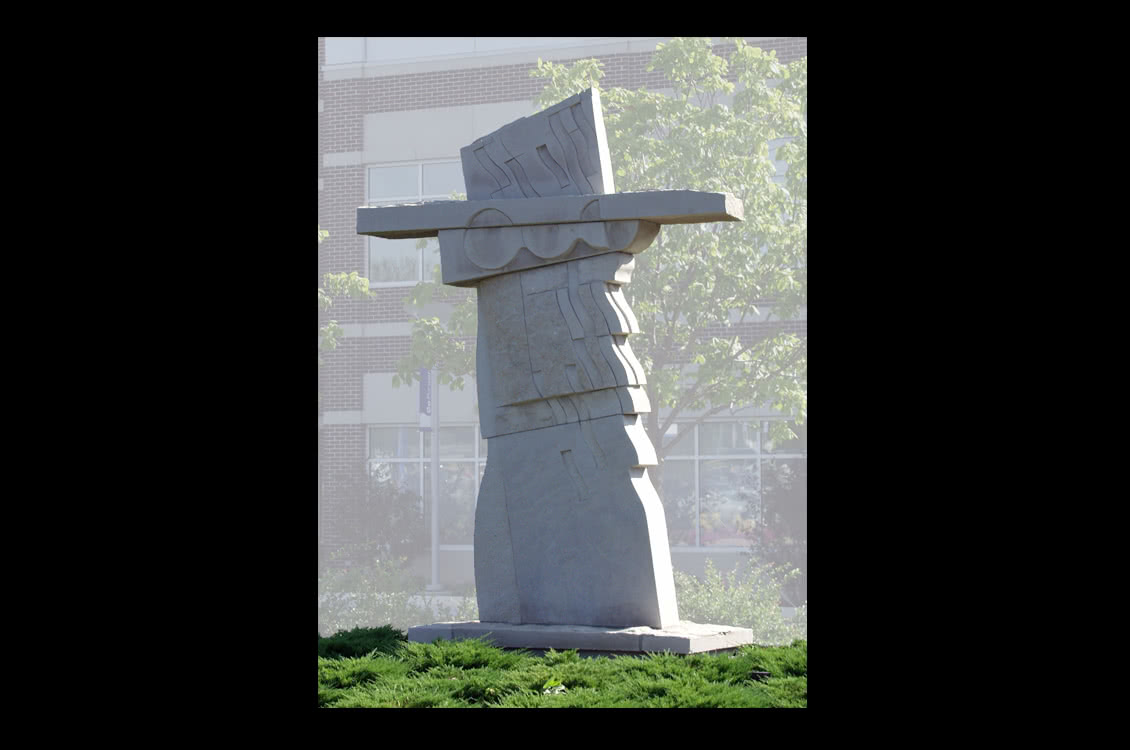 |
 |
Michael Brown, &i{{Lintel}}, 2001 | Michael Brown, &i{{Lintel}}, 2001, Limestone, 10’ x 6’ x 2’, Harper College Educational Foundation purchase (2002) — The idea for &i{{Lintel}} came from Michael Brown’s visit to Mesa Verde National Park in Arizona. He was fascinated by the famous cliff dwellings and homes carved out of the steep rock by early native peoples. The shape of the doorways and the heavy lintels that spanned the tops of the door openings inspired this sculpture, which was acquired by Harper College in 2002. Brown is Professor Emeritus of Sculpture at Harper College. Location: Wojcik Center, northwest of main entrance. |
 |
 |
Robert Stackhouse, &i{{Chicago Structure}}, 1997 | Robert Stackhouse, &i{{Chicago Structure}}, 1997, Painted wood, 8’ x 38’ x 13’, Gift of the artist and Paul Klein Gallery (2004) — Robert Stackhouse creates sculptures, paintings and prints that address ideas of both shelter and open space. Some of his works resemble A-frame structures, boats or vessels. The sculptures, made of slats of wood with open spaces in between, seem monumental but mysterious. The wooden form implies a solid framework, while the open spaces suggest the ephemeral nature of man-made structures. Location: Building E, northwest of west entrance. |
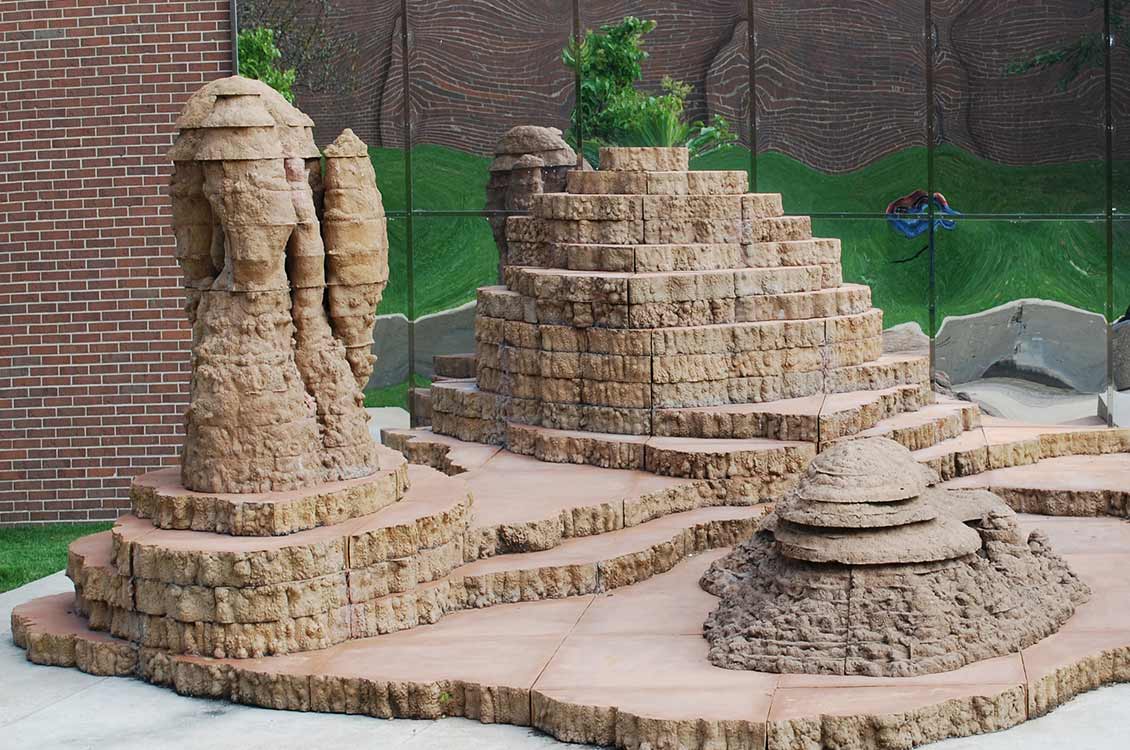 |
 |
Gerard Singer, &i{{Permutant-Modular Sculpture}}, 1983 |
Gerard Singer, &i{{Permutant-Modular Sculpture}}, 1983, Colored ferro-concrete, 12’ x 24’ x 23’, Gift of the artist (1989) — This modular sculpture by French artist Gerard Singer depicts a primitive, barren terrain inspired by drawings of landscape elevations. Singer has said he would like his artworks to “soften” the transition between nature and architecture, eliminating the harsh contrasts that exist between modern, technological environments and their natural surroundings. &i{{Permutant}} was shown at the International Art Show of contemporary sculpture at Navy Pier, and was donated to the College in 1989 by the artist and the Ministere des Relations Exterieures, France. Location: Building E, south facade. |
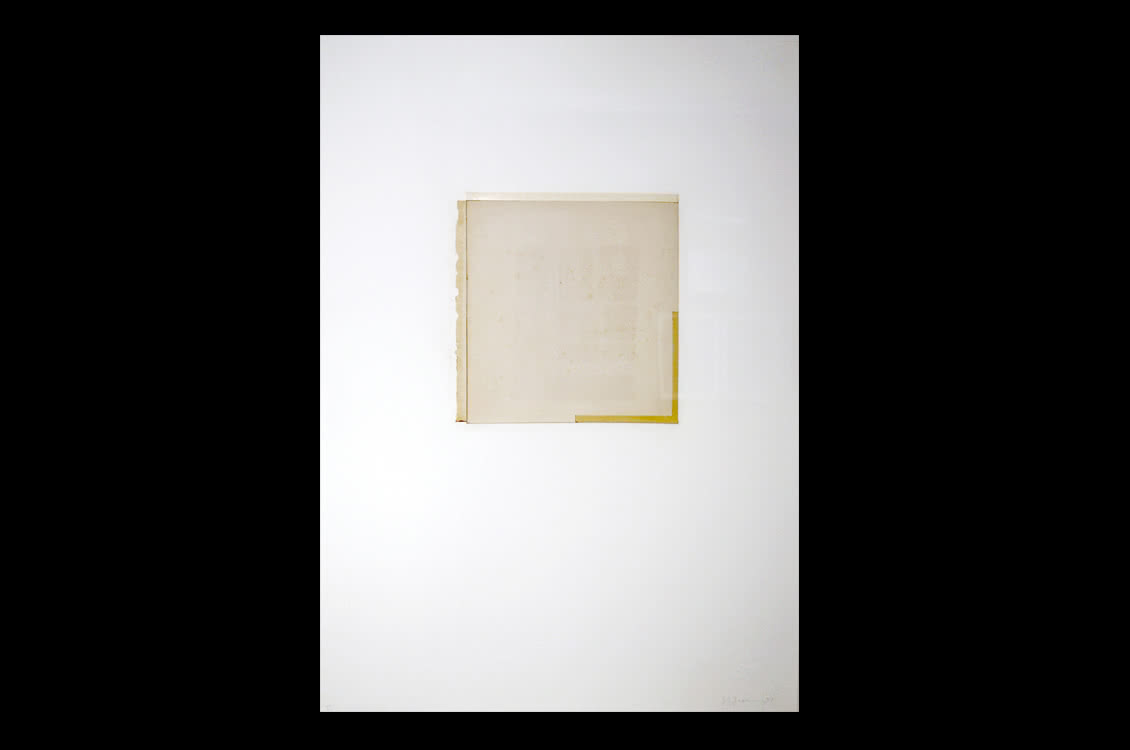 |
 |
John Fraser, &i{{No Title (“right angle”)}}, 1997 |
John Fraser, &i{{No Title (“right angle”)}}, 1997, Graphite, acrylic and varnish on collaged papers, 8 1/4” x 8 1/4”, Gift of the artist (2001) — John Fraser’s quiet compositions have a meditative bent. They are constructed from collage materials and drawn and painted elements. The collages are severe in their simplicity but sensuous in their use of color and textural surfaces. Although the abstract forms are subtle, they have a commanding presence that directs the viewer to stop and reflect on what they see. Location: Building C, second floor, near Room C222. |
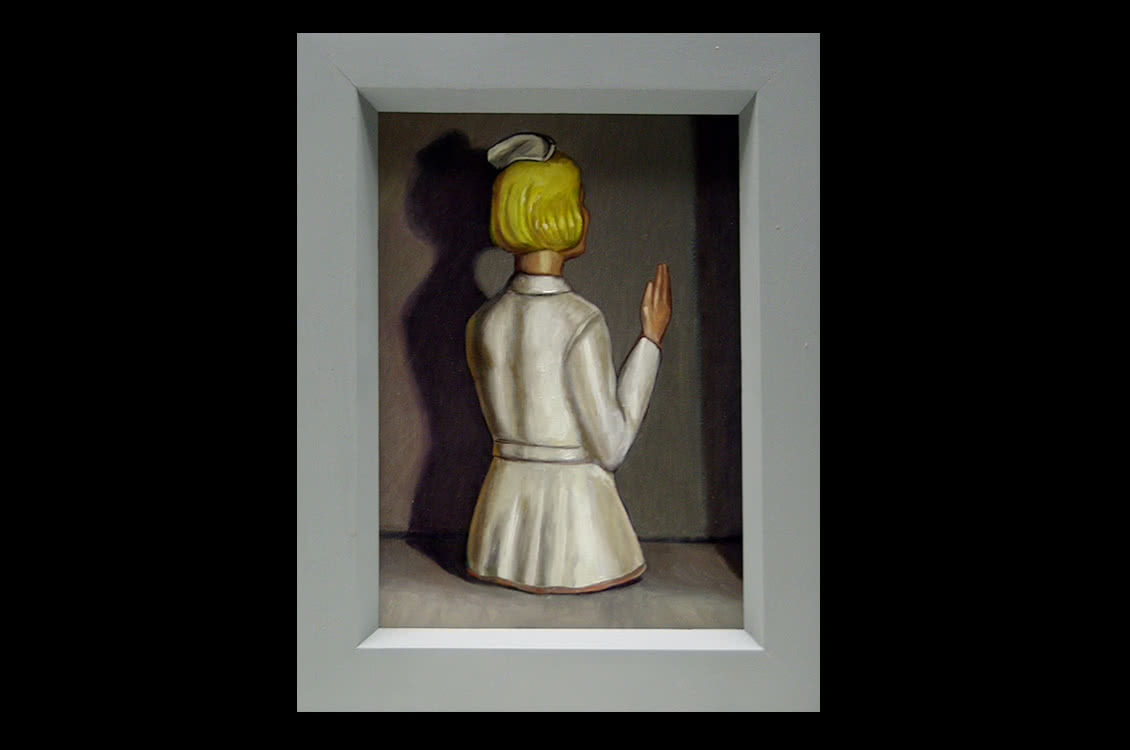 |
 |
Frank Trankina, &i{{Nurse}}, 2002 | Frank Trankina, &i{{Nurse}}, 2002, Oil on panel,14 ¼” x 10”, Harper College Educational Foundation Purchase Award, 26th Harper College National Small Works Exhibition (2003) — Frank Trankina’s paintings present popular consumer objects such as toys and action figures grouped together in still life tableaus. His painted objects and figures seem anthropomorphic, with human emotions such as sadness, exhilaration or bewilderment. Trankina says he is influenced by “theater and opera with their classic comedic and tragic forms.” The idiosyncratic groupings of these expressive figures suggest unsettling narratives. Location: Building C, second floor, near Room C219. |
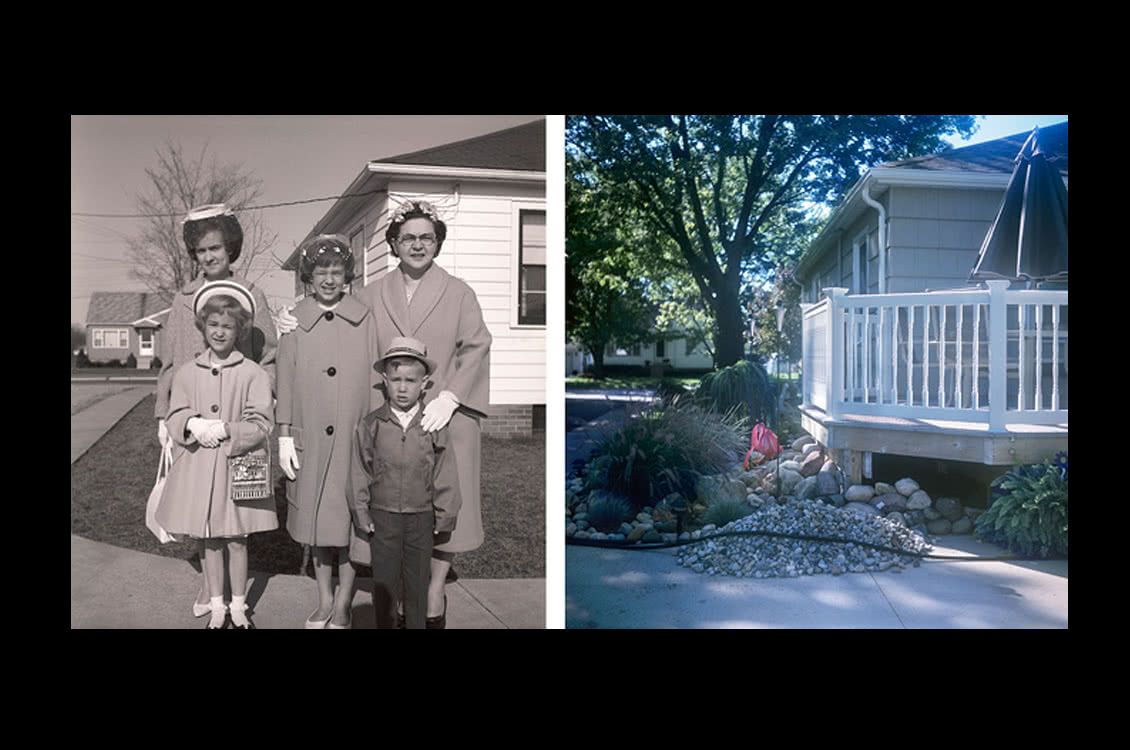 |
 |
Christopher Meerdo, &i{{Reiteration No. 55B-1 (flamingo)}}, 2007 | Christopher Meerdo, &i{{Reiteration No. 55B-1 (flamingo)}}, 2007, Digital archival print, 22 ¾” x 21 5/16” (each piece with frame), Harper College Educational Foundation purchase (2011) — In this photographic diptych, Christopher Meerdo examines the relationship between the past and present. The juxtaposed images open a dialogue on the complex nature of the photograph as both a record and abstraction of reality. The black and white image is lifted from the artist’s own family album and then reprinted. In order to reiterate history, Meerdo has gone back to the exact same location where the original photograph was taken to document the present. In the color photograph the figures disappear and a renovated house remains as the only artifact of time and memory. Location: Building C, second floor, near Room C217. |
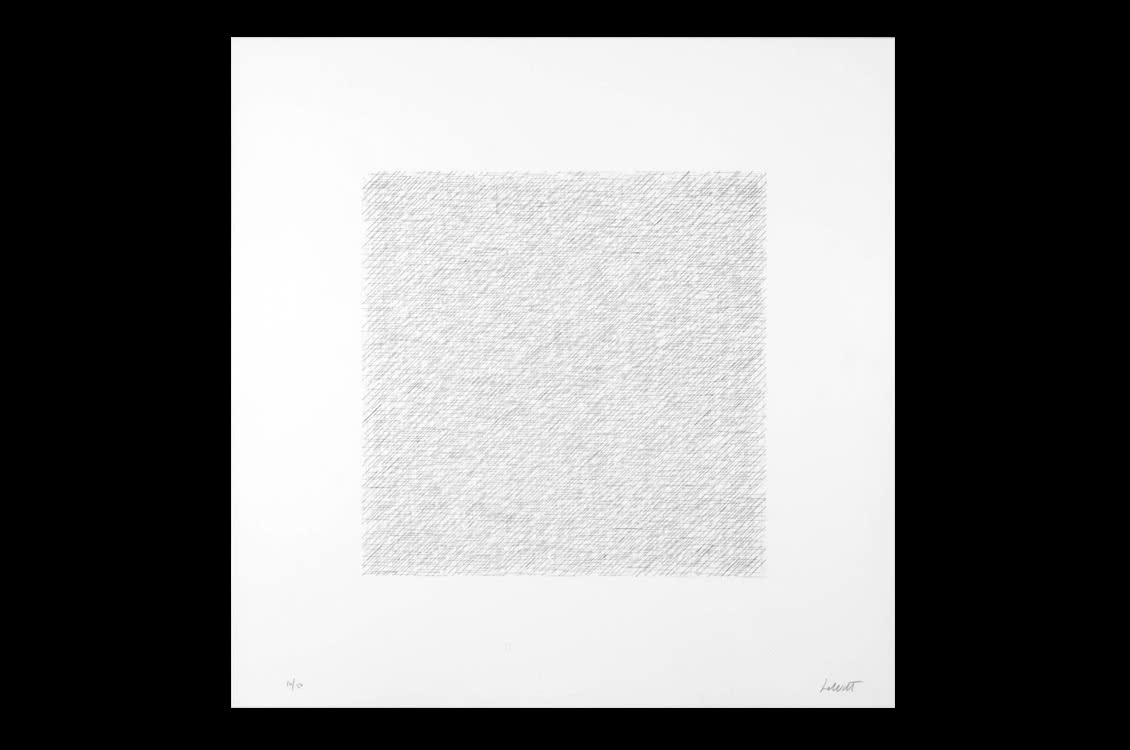 |
 |
Sol LeWitt, &i{{Suite 1}}, 1970 | Sol LeWitt, &i{{Suite 1}}, 1970, Suite of 16 lithographs, each 14” x 14” (23” x 23” paper size), Gift of Stanley Freehling (1972) — Sol LeWitt, an internationally known New York artist, was a leading proponent of Conceptual Art. He executed drawings, prints and wall installations composed of carefully measured lines based on precise, mathematical relationships. The lines often originated from points on a grid. Many of LeWitt’s installations are temporary. They can be reproduced based on a set of instructions by the artist, thus establishing the idea of the work as of primary importance. Location: Building C, second floor, near Room C201-202. |
 |
 |
Mary Snyder Behrens, &i{{Trammel Box (Closed)}}, 2005 | Mary Snyder Behrens, &i{{Trammel Box (Closed)}}, 2005, Cloth, thread, twine, graphite, nail over metal form, 3 ¾” x 2 ½” x 1”, Martha Bell Purchase Award, 29th Harper College National Small Works Exhibition (2006) — Mary Snyder Behrens’ small mixed media assemblages are comprised of elegant combinations of materials like cloth, twine and found objects. Snyder Behrens’ abstract works are metaphors of memory: wonderful and awful sensations are bound together to represent the ongoing experience of consciousness. The tiny objects are transformed into ambiguous objects rich with meaning. Location: Building C, second floor, near Room C212. |
 |
 |
Jerry Pinsler, &i{{Landscape}}, 1967 | Jerry Pinsler, &i{{Landscape}}, 1967, Oil on canvas, 90” x 78”, HEW Grant purchase (1970) — Jerry Pinsler was well known in Chicago in the 1950’s for his large Abstract Expressionist paintings. This painting is typical of his style with its large, painterly brushstrokes and expressive color. He also created more geometric abstractions that were based on cityscapes. Pinsler showed actively in Chicago and also worked as a successful toy designer. Location: Building A, third floor, across from Building C entrance. |
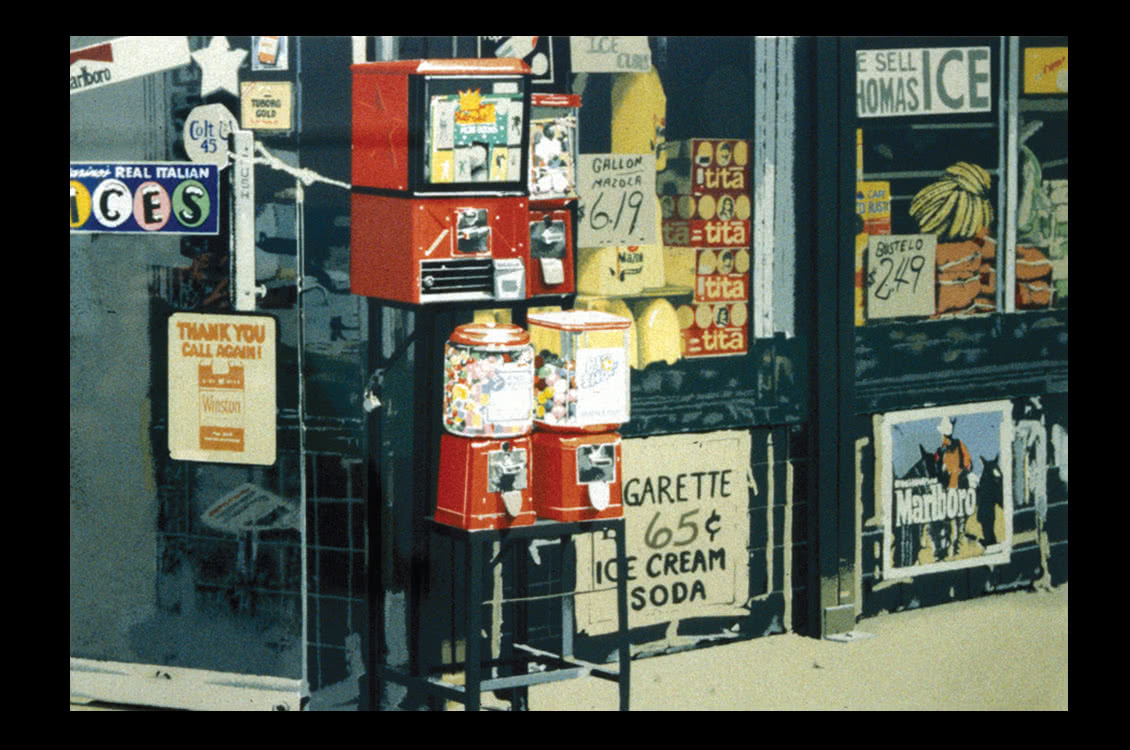 |
 |
Charles Bell, &i{{Little Italy}}, 1979 | Charles Bell, &i{{Little Italy}}, 1979, Color screen print, 17” x 24 3/4”, Gift of Wayne Harkleroad (1980) — Charles Bell began working in California in the 1960’s, painting large-scale oil paintings featuring small toys and other objects. He was affiliated with the Photorealist movement, and used photographs as a reference for his highly realistic renderings of urban scenes. He is well known for his series of gumball machine paintings and screen prints depicting light falling on the reflective surfaces of the glass globes. Location: Building A, third floor bridge, east of Room A376. |
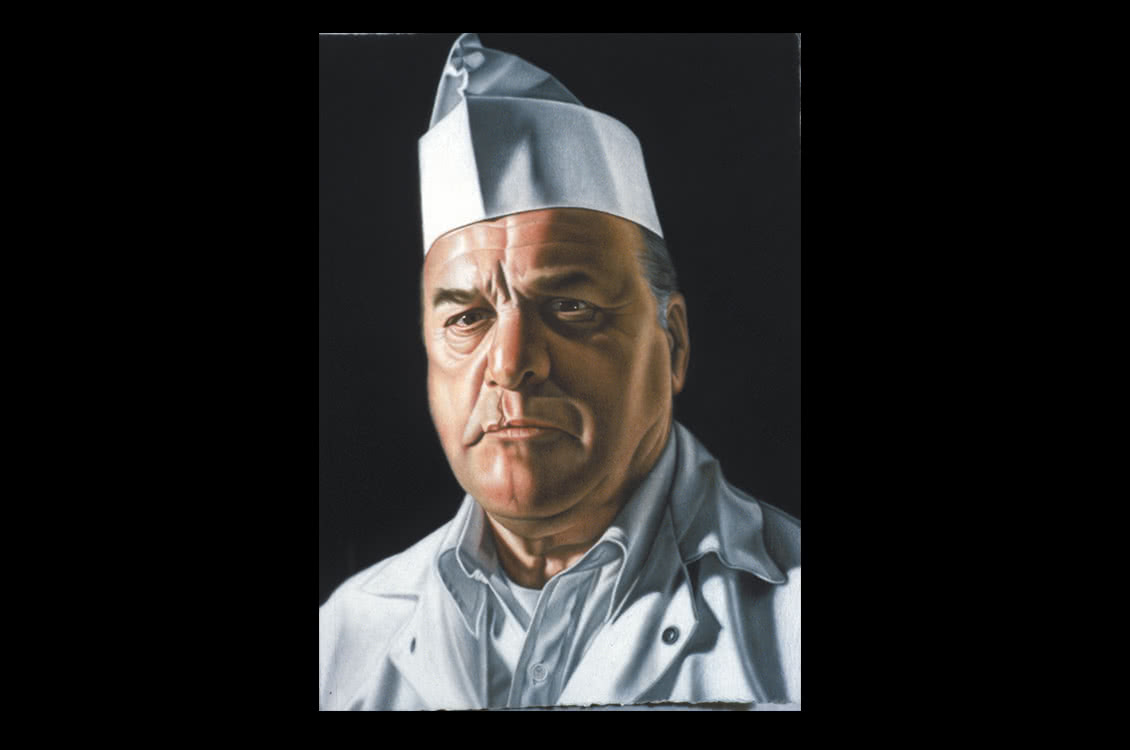 |
 |
Eric Semelroth, &i{{The Butcher}}, 1995 | Eric Semelroth, &i{{The Butcher}}, 1995, Pastel on paper, 29½” x 21 ½”, Harper College Educational Foundation purchase (2003) — This drawing of a butcher by Eric Semelroth, a former Adjunct Faculty member at Harper, is an intense psychological observation of the subject. Semelroth’s work focuses on representative, almost hyper-realistic portraits. He often stops people on the street to ask them if he might do their portrait. Some of his subjects appear in costume, with their clothing amplifying a part of their identity. Although Semelroth works from life, he also takes photographs of his subjects, which allows him to create highly realistic portraits. Location: Building A, third floor bridge, near Room A376. |
 |
 |
Roland Ginzel, &i{{Orange}}, 1970 | Roland Ginzel, &i{{Orange}}, 1970, Acrylic on canvas, 69” x 74”, HEW Grant purchase (1970) — This painting by Roland Ginzel employs bold, seductive color enclosed by both organic and geometric shapes to explore formal concerns. Ginzel’s strong commitment to abstraction is apparent here, with smaller, hard-edged shapes cutting through a broad expanse of rich orange color. The diagonal bands of color on the right add a subtle layer of shape and texture, offering a counterpoint to the orange color field. Location: Building A, third floor, near Room A347. |
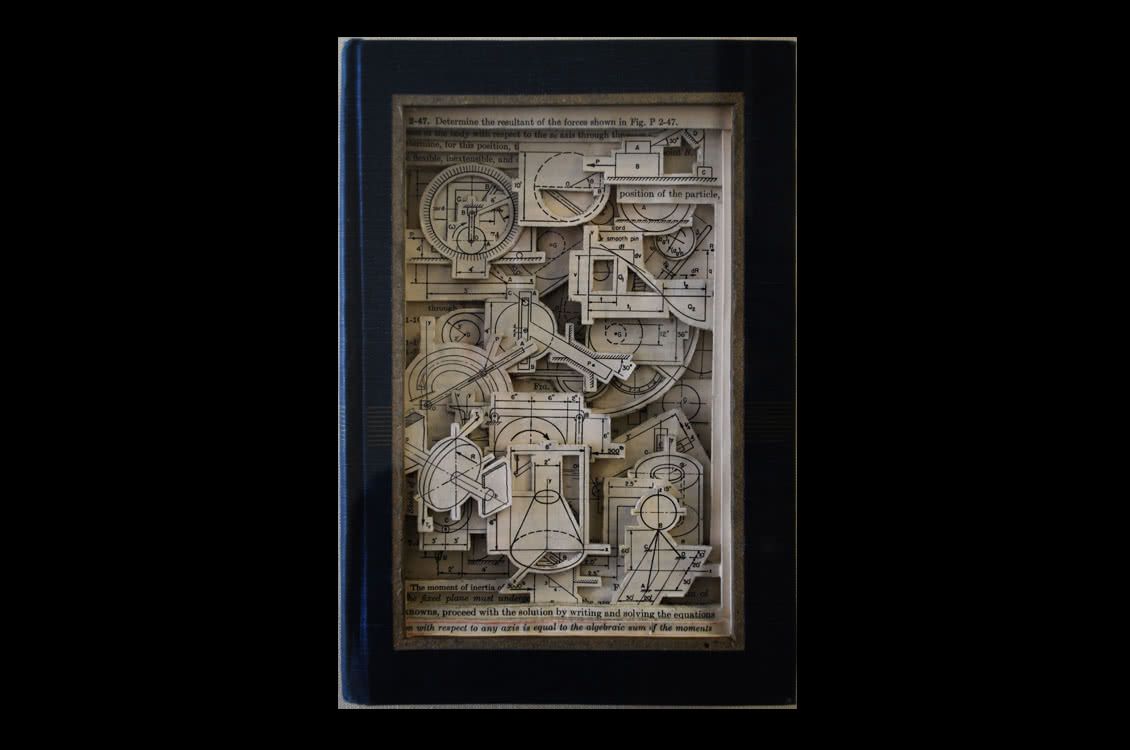 |
 |
Brian Dettmer, &i{{Engineering Mechanics}}, 2005 | Brian Dettmer, &i{{Engineering Mechanics}}, 2005, Altered book, 9” x 6 ¼”, Harper College Educational Foundation purchase (2007) — Brian Dettmer transforms old maps, books, atlases and encyclopedias into obsessively layered works of art. In this altered engineering textbook, he cuts around the shapes of technical drawings on a page and incises that same shape into subsequent pages. The pages become sculpted forms, transforming the book into a carved sculptural object. The layers of form and shadow create a dazzling image that deconstructs text and image, and challenges our ideas about how we process information. Location: Building P, first floor, near Room P111. |
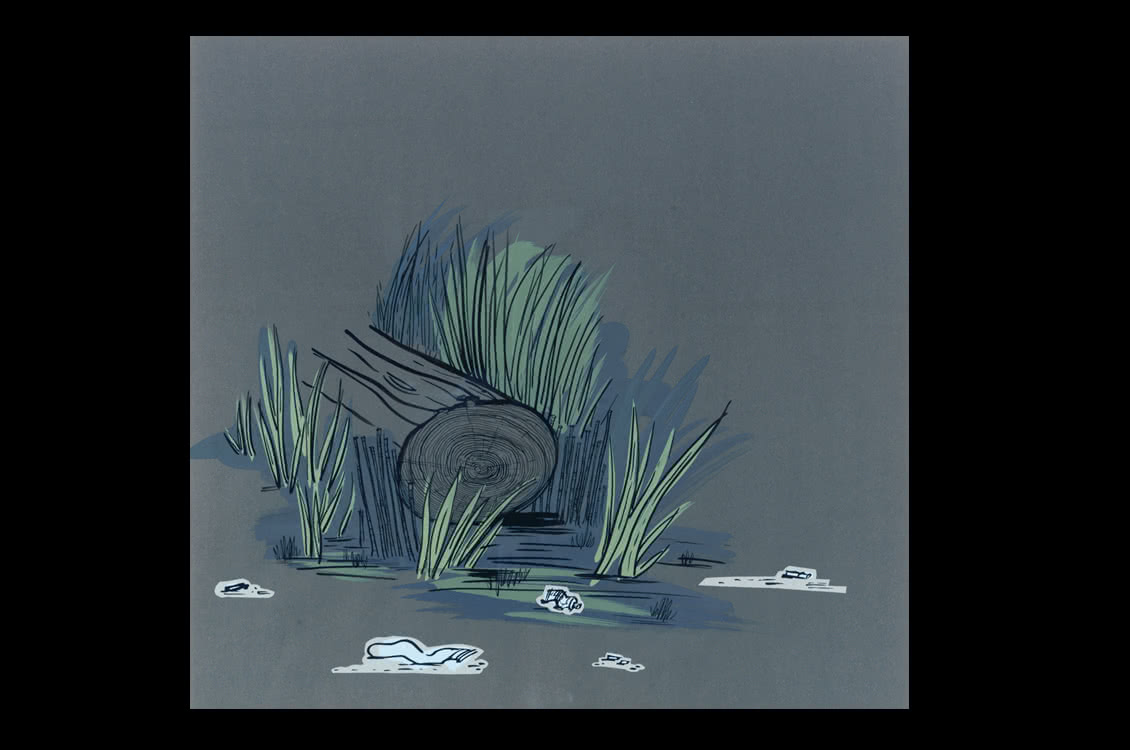 |
 |
Lora Fosberg, &i{{I even love it if you’re faking it}}, 2006 | Lora Fosberg, &i{{I even love it if you’re faking it}}, 2006, Gouache on found paper, 16 ½” x 17”, Harper College Educational Foundation purchase (2012) — Lora Fosberg creates works that suggest ambiguous narratives about everyday life and the uneasy relationship between humanity and nature. She uses gouache, India ink, collage and linoleum cut to compose graphic works with an economy of line. Human figures are rendered next to a few words of text, as if lost in thought, or are placed in truncated landscapes. There is a sense of people disconnected from each other, but nevertheless trying to communicate. The mundane progression of everyday life merges with the physical experience of being in the world in her fragmented images. Location: Building P, first floor, near Room P105. |
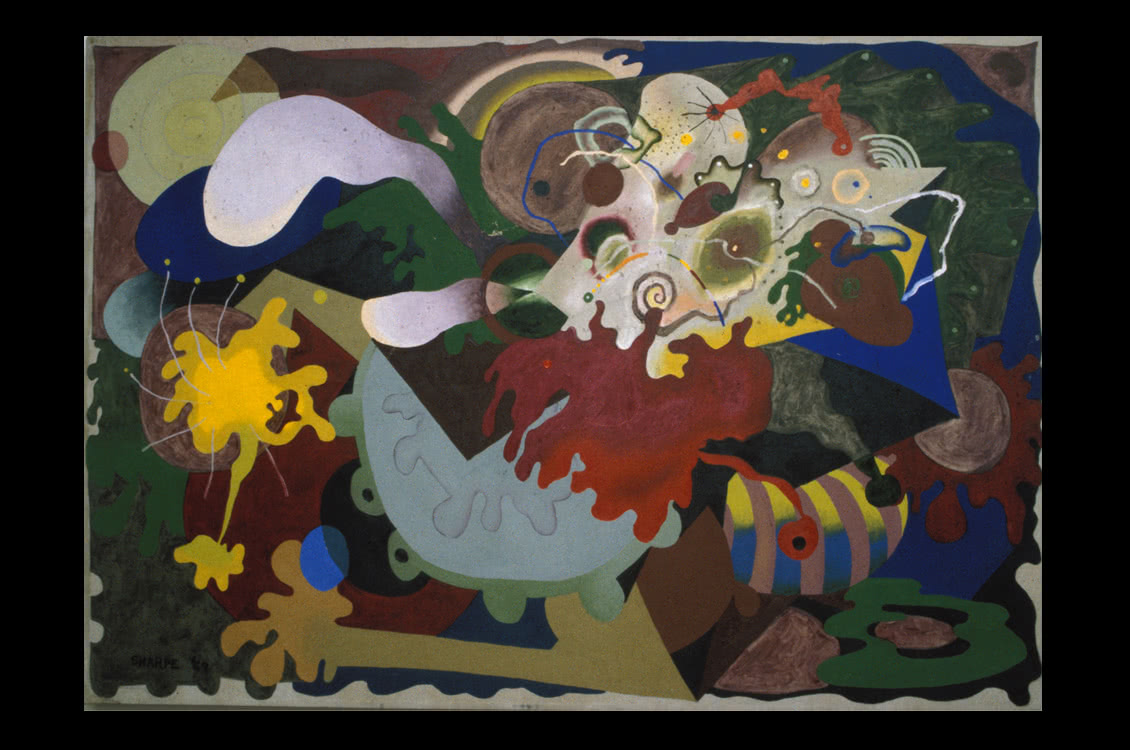 |
 |
David Sharpe, &i{{Jumping Jacks}}, 1969 | David Sharpe, &i{{Jumping Jacks}}, 1969, Oil on linen, 42” x 60”, Gift of Bill Bass Gallery (1973) — This painting by David Sharpe explores a range of playful, organic forms layered on top of dark fields of color. The biomorphic forms hint at the human figure and at landscape but remain abstract. Sharpe looks to the everyday world for inspiration, and has explored the figure and landscape more directly in later works. Location: Building L, second floor, across from Room L229. |
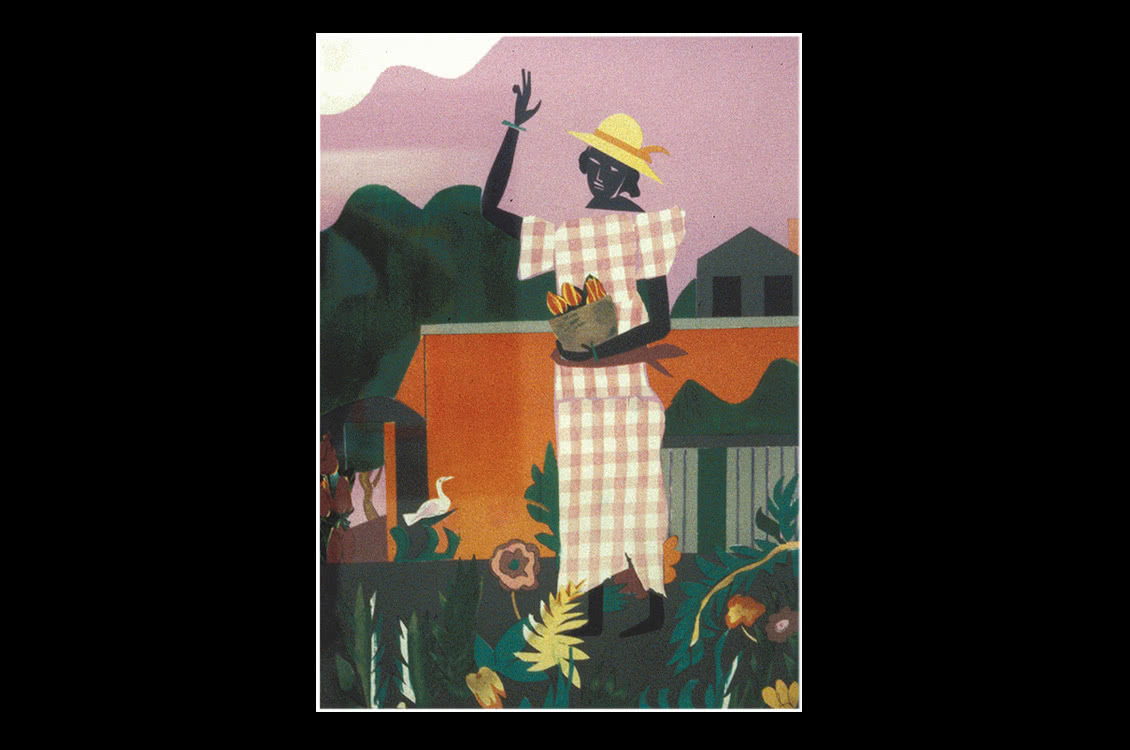 |
 |
Romare Bearden, &i{{In the Garden}}, 1979 | Romare Bearden, &i{{In the Garden}}, 1979, Color lithograph, 22” x 16”, Gift of Wayne Harkleroad (1980) — Romare Bearden, an African American painter and collage maker, drew from his personal experience as well as larger themes from his cultural heritage. He was a master of collage, using colorful paper patterns and magazine paper to create rich imagery. He incorporated a range of influences in his work, including American and European art, African masks and symbols, and jazz music. This lithograph adopts Bearden’s collage aesthetic with its use of pattern and images that resemble shapes cut from paper. Location: Building L, second floor bridge, near Room L221. |
 |
 |
Alice Neel, &i{{John}}, 1979 | Alice Neel, &i{{John}}, 1979, Color lithograph, 23 ¾” x 19”, Gift of Wayne Harkleroad (1982) — Alice Neel’s portraits, like her unconventional life, are honest and direct. She painted male nudes, art world celebrities, neighbors, and Nobel Laureates with the same intensity, revealing the personality of the sitter. Because she did not conform to avant-garde art trends, Neel’s work received little critical interest until the rise of feminism in the 1960s. This lithograph exhibits the same expressionistic use of line, color, and piercing psychological insight as her oil on canvas portraits. Location: Building L, second floor bridge, near Room L219. |
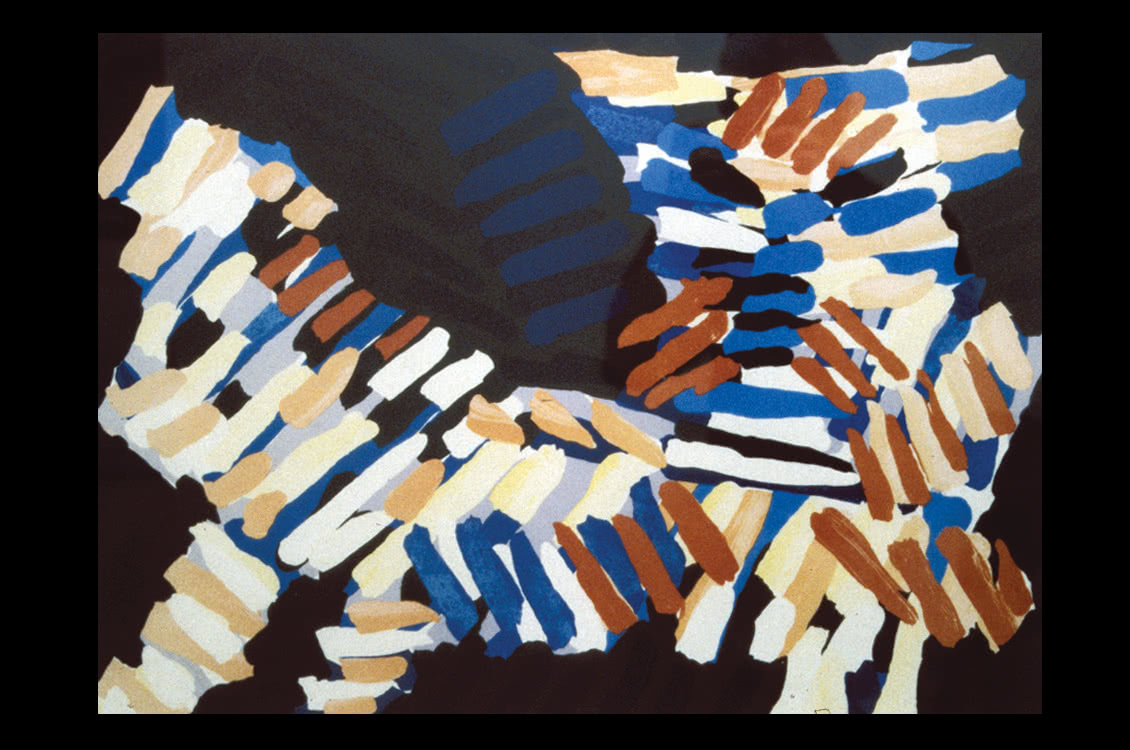 |
 |
Karel Appel, &i{{Ten by Appel}}, 1980 | Karel Appel, &i{{Ten by Appel}}, 1980, Suite of 10 color lithographs, each 21” x 29”, (pictured: Cat of the Night), Gift of John Onodi (1981) — Karel Appel, a Dutch painter born in 1921, was influenced by Pablo Picasso, Henri Matisse and Jean Dubuffet. In 1948, Appel and several Dutch, Belgian and Danish artists formed an experimental group called COBRA. Their paintings consisted of simplified figurative forms, a dynamic design element and intense color. Appel’s paintings included animals and figures in motion, with bright colors juxtaposed against a dark background. This suite of lithographs has a similar style to that of his paintings. Location: Building L, second floor bridge, south wall. |
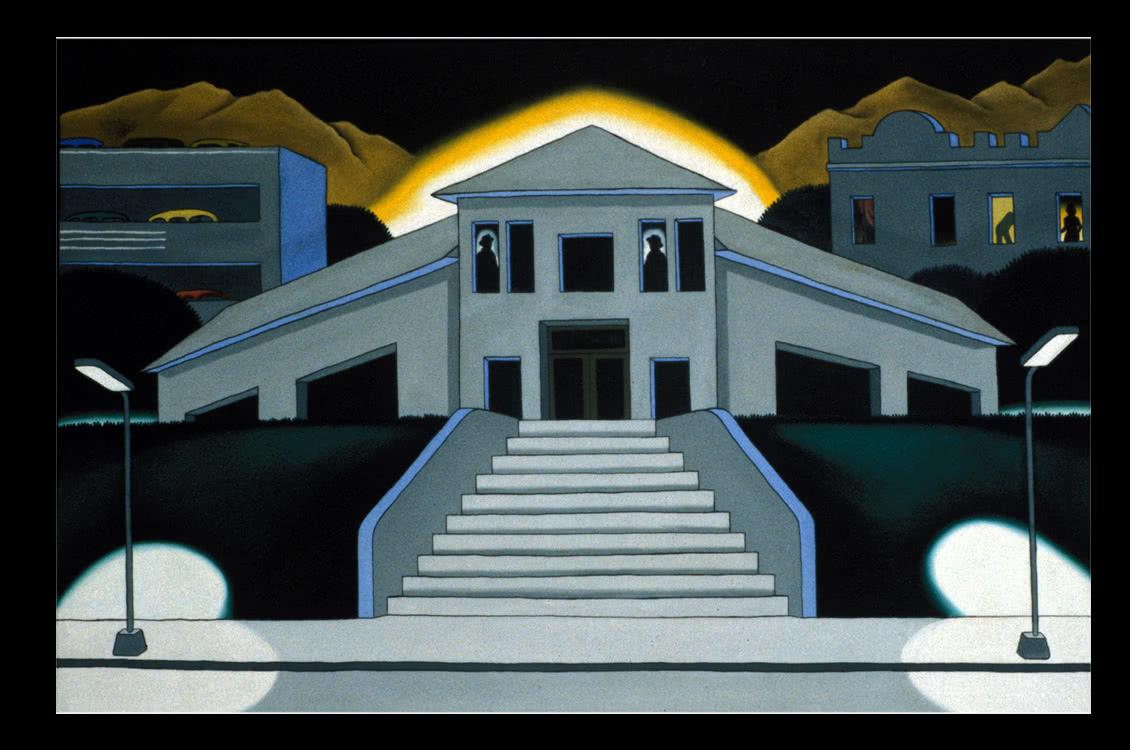 |
 |
Roger Brown, &i{{Public Building}}, 1969 | Roger Brown, &i{{Public Building}}, 1969, Oil on canvas, 30” x 48”, HEW Grant purchase (1970) — This painting is typical of Roger Brown’s work around 1970. Vertical windows set into stark building facades frame figures silhouetted by dramatic lighting. Simple, flat planes comprise the symmetrical architectural elements as well as the landscape in the background. The halo of light surrounding the roof of the central building adds to the painting’s symmetry. All these elements together create a still, airless environment. Brown’s stylized pictures are internationally known and are associated with the Chicago Imagist movement. Courtesy of the School of the Art Institute of Chicago and the Brown Family. Location: Building L, second floor, Room L201, Conference Room. |
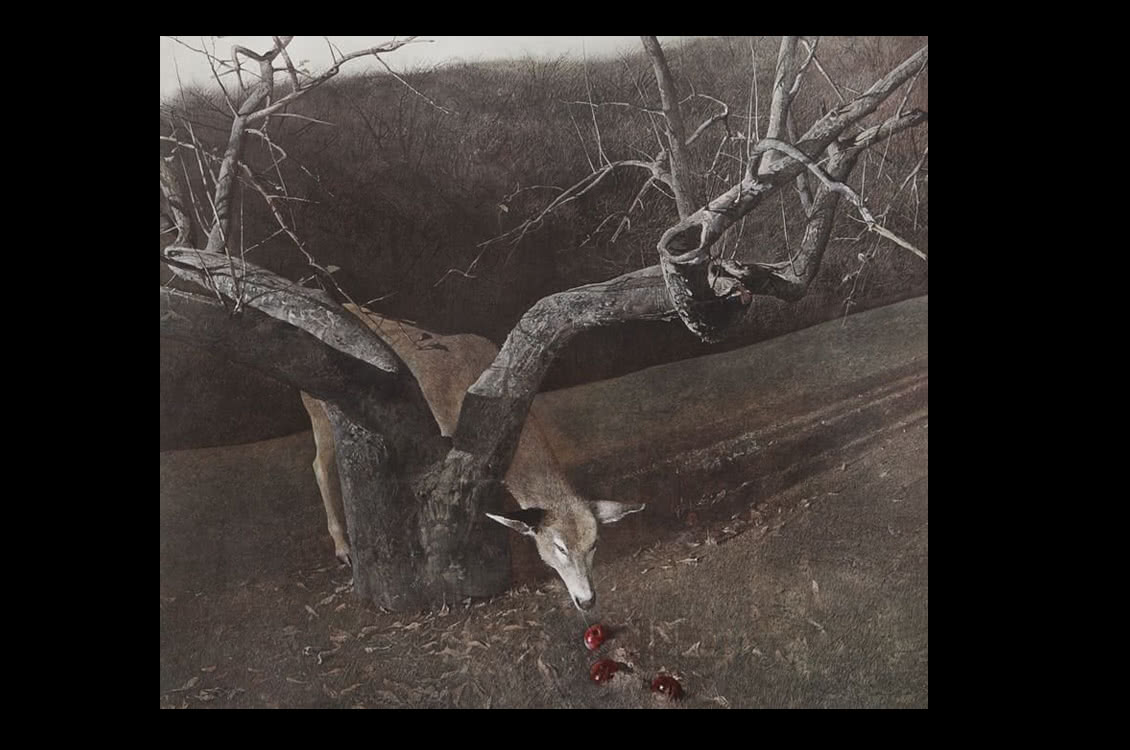 |
 |
Andrew Wyeth, &i{{Jack Light}}, c. 1982 | Andrew Wyeth, &i{{Jack Light}}, c. 1982, Collotype, 28” x 32”, Gift of Howard Wirth (1996) — Andrew Wyeth’s image of a doe caught in the beam of a poacher’s jacking light reflects his interest in intense observation of reality. He records every blade of grass, every individual strand of the doe’s fur, and every contrast of light and shadow. Wyeth’s paintings seem to capture a moment frozen in time. Everyday scenes are painted in great detail, with a mysterious intensity. He worked in tempera and watercolor; the original image for this collotype print may have been a tempera painting. Location: Building L, second floor, Room L203, Liberal Arts Division office. |
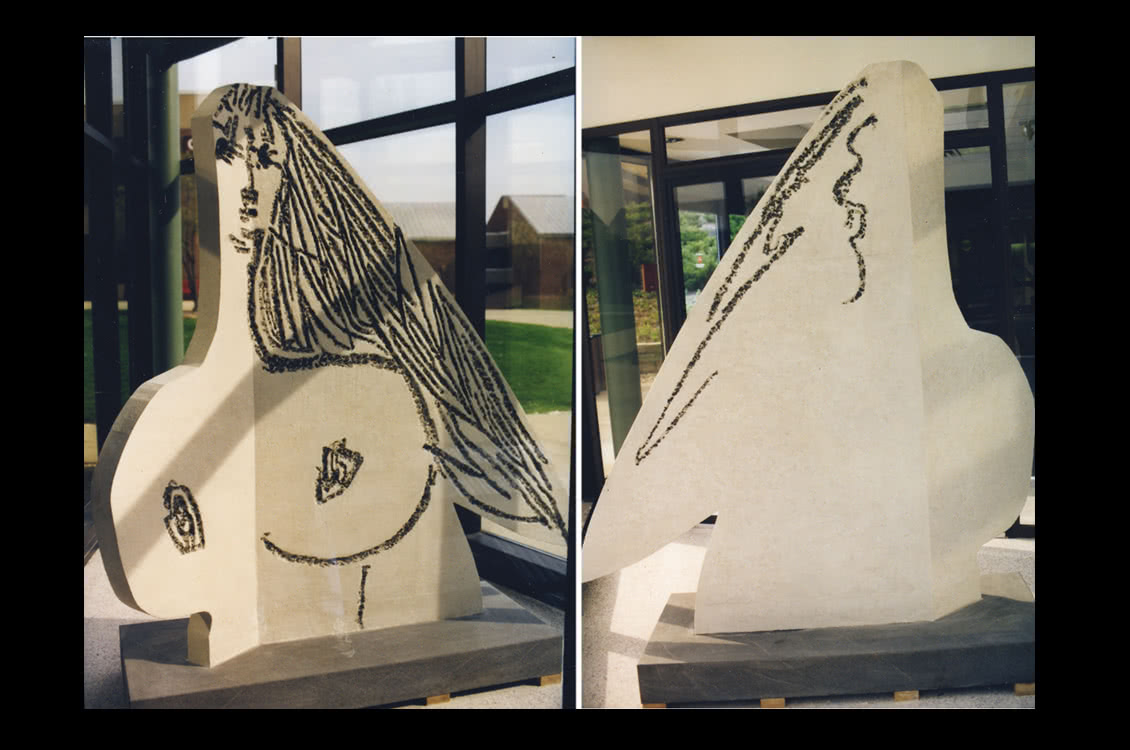 |
 |
Pablo Picasso, &i{{The Bather}}, Designed 1973 and fabricated 1975 | Pablo Picasso, &i{{The Bather}}, Designed 1973 and fabricated 1975, Concrete and granite aggregate, 80” x 74” x 24”, Gift of William Ylvisaker (1994) — This work by one of the world’s foremost artists may have been inspired by Edouard Manet’s famous painting The Bathers. &i{{The Bather}} was designed by Picasso shortly before his death in 1973, and was fabricated by his associate, the Norwegian artist Carl Nesjar, in 1975. Picasso sometimes collaborated with Nesjar to create sculptures from his drawings. The sculptural form of the female figure was conceived to have a sketch-like directness. It is constructed of concrete with dark granite aggregate exposed by incising lines into its surfaces (a technique called betogravure). This produces an effect similar to drawing, with a range of values across the surface. &i{{The Bather}} is a maquette for the upper half of a sculpture Picasso originally designed for a Danish museum. The museum’s plans for the larger sculpture were never finalized, but it was later built on the grounds of Gould Industries in Palatine. William Ylvisaker of the Gould Corporation donated this smaller scale model to Harper in 1994. Location: Building L, first floor lobby, near Room L113. |
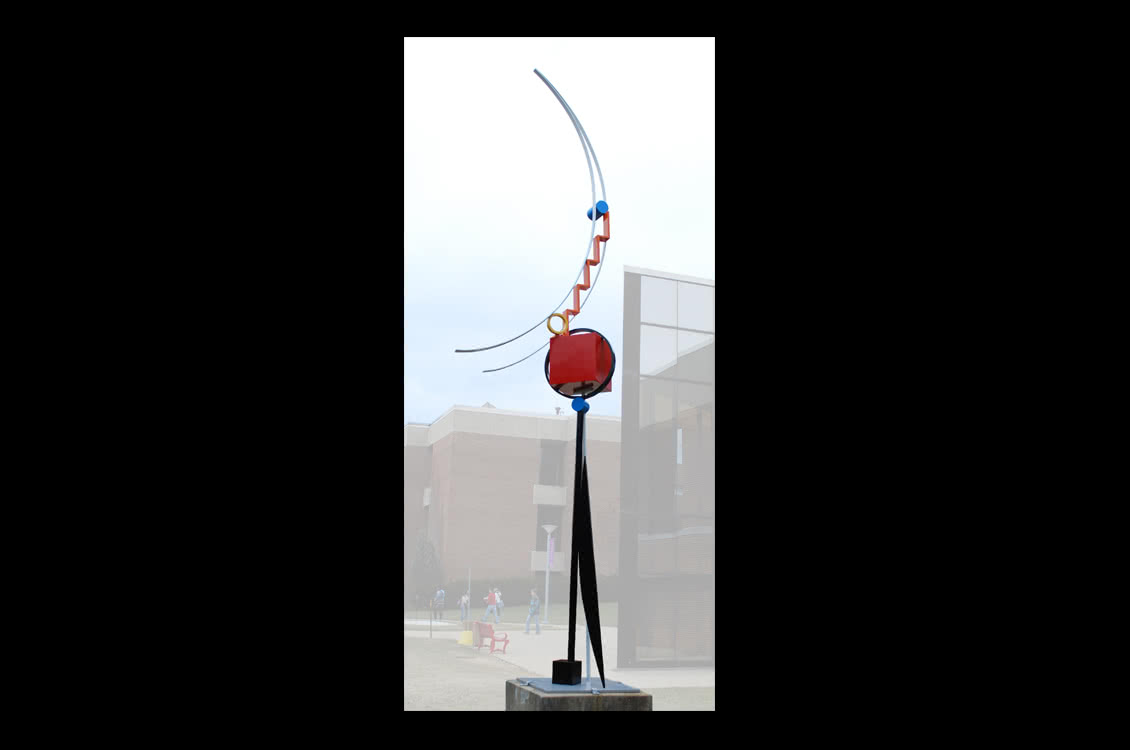 |
 |
Fletcher Benton, &i{{Steel Watercolor #69}}, 1985 | Fletcher Benton, &i{{Steel Watercolor #69}}, 1985, Painted steel, 26’ x 3’ x 3’, Harper College Educational Foundation purchase (1996) — This sculpture is influenced by a series of watercolors painted when Fletcher Benton did not have access to a large sculpture studio to work in. He explored the idea of balance in the watercolors while responding to the delicacy of the medium. When he returned to sculpture, Benton used sculptural materials to explore precarious balance, while crossing the boundary between painting and sculpture with brightly painted surfaces. Location: Harper Quad, north of Building L. |
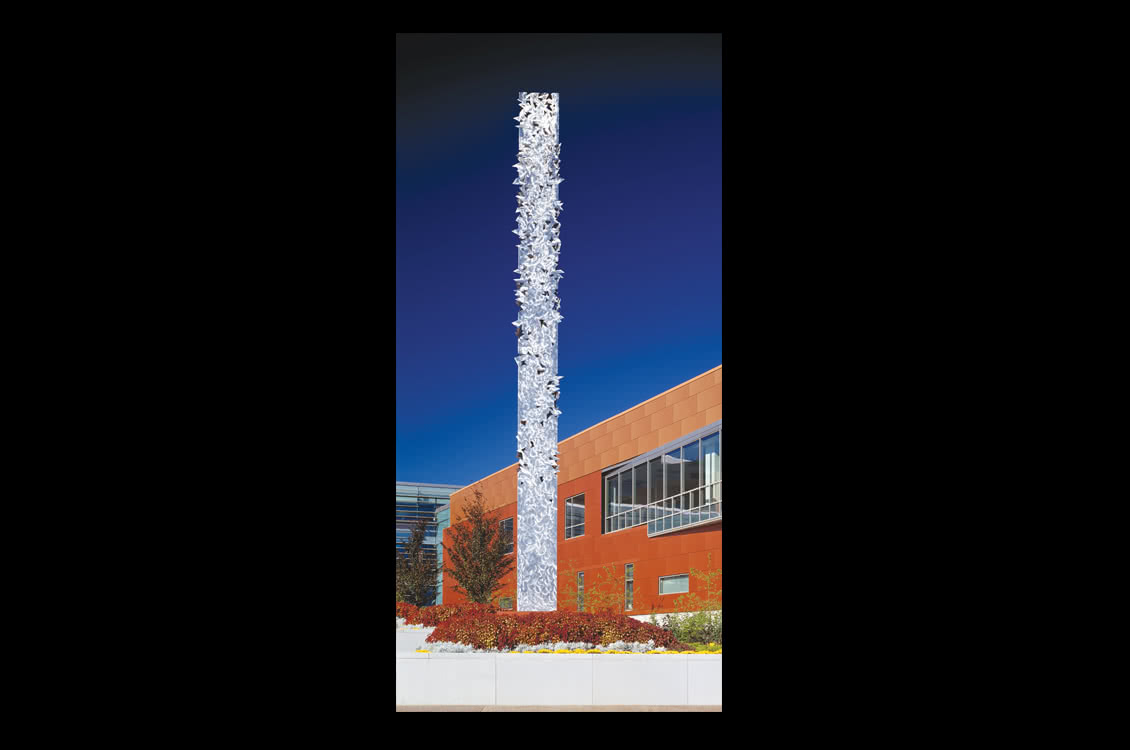 |
 |
Bruce White, &i{{Jubilee}}, 2004 | Bruce White, &i{{Jubilee}}, 2004, Stainless steel, 40’ x 3’ x 3’, Underwritten by David and Diane Hill Family Fund of the Homebuilding Community Foundation and the Harper College Educational Foundation (2004) — This sculpture by Bruce White, Professor Emeritus at Northern Illinois University, was commissioned to mark the completion of Avanté Center for Science, Health Careers and Emerging Technologies. &i{{Jubilee}} is a triangular stainless steel column, with the top half pierced by cut-out geometric shapes. The sculpture seems to burst open at the top, dissolving into the sky. It is lit from within; at night the light radiates though the openings. With its highly polished surface and soaring structure, &i{{Jubilee}} celebrates the completion of the Avanté Center. Location: Avanté Center, south of main entrance. |
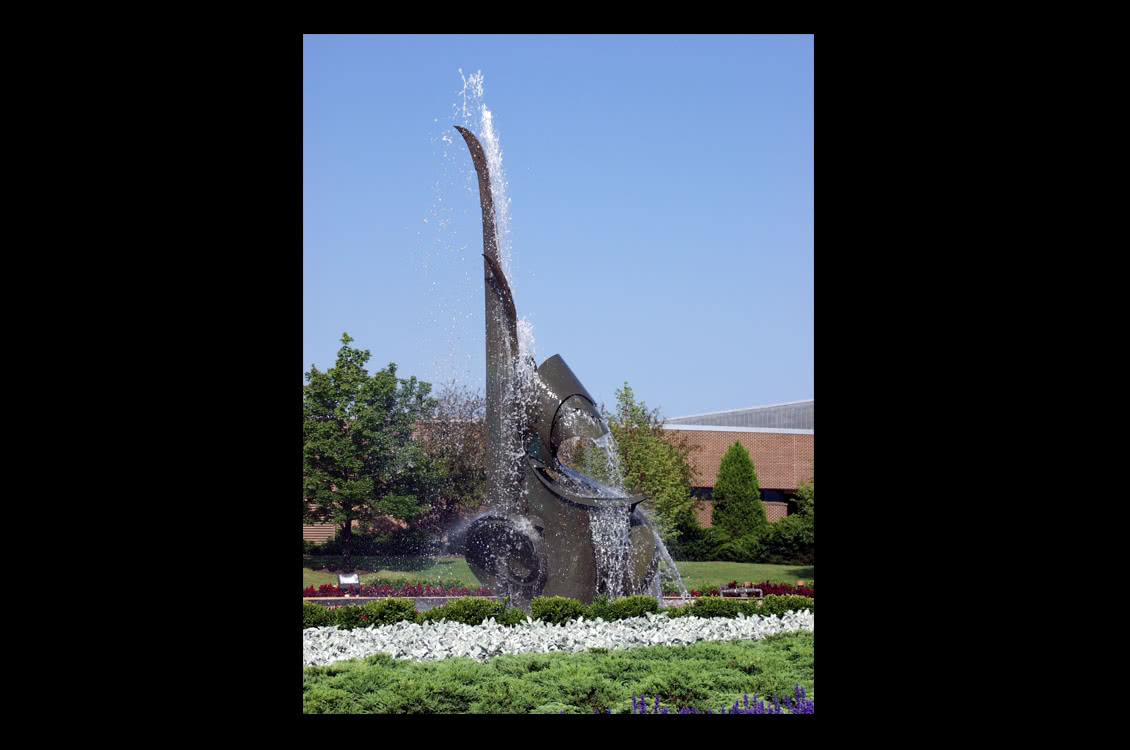 |
 |
John Medwedeff, &i{{Oasis}}, 2002 | John Medwedeff, &i{{Oasis}}, 2002, Bronze, 27’ x 7’ x 9’, Underwritten by David and Diane Hill and purchased with partial support from the State of Illinois Art-in-Architecture program (2002) — &i{{Oasis}} was created as a landmark to be sited in front of the Performing Arts Center, built in 2001. John Medwedeff, a southern Illinois sculptor, was commissioned to create the work. Medwedeff intended this sculptural fountain to have a bold presence that could be easily seen from the campus entrance. The artist says, “I see this abstract sculpture as a narrative inspired by patterns that I find in nature and synthetic forms.” Location: Performing Arts Center, west of main entrance. |
The original concept for the Harper College Art Collection included public exhibition of works of art. Since 1969, the Educational Foundation of the College has established and developed a permanent collection of more than 360 works of painting, printmaking, drawing, photography and sculpture. The work of many nationally and internationally known artists is featured in the Collection. The Educational Foundation has built this large collection with generous donations, privately sponsored purchase awards for artists, grants, and long-term loans made by artists. This tour will showcase a number of diverse works from Harper’s extensive collection.